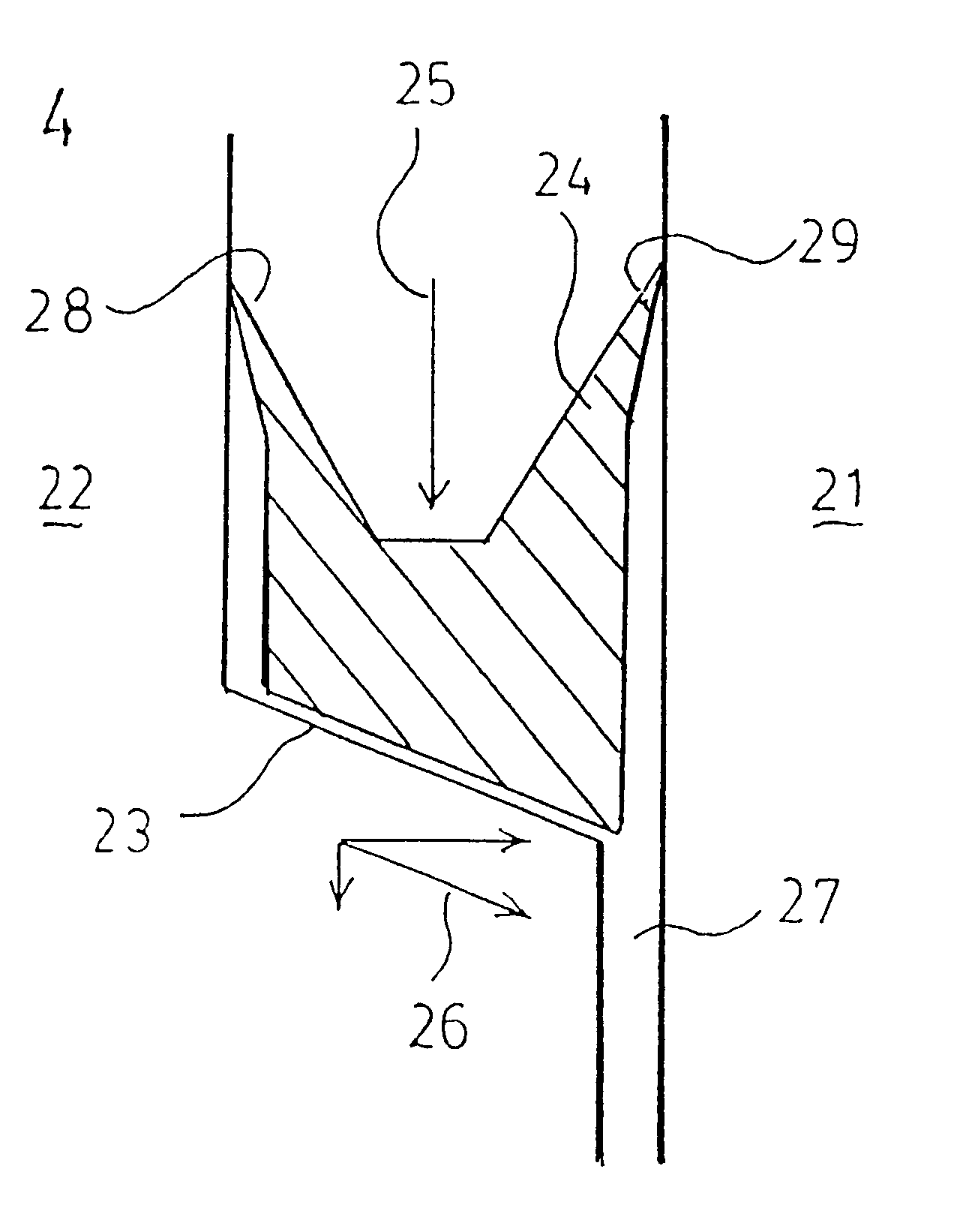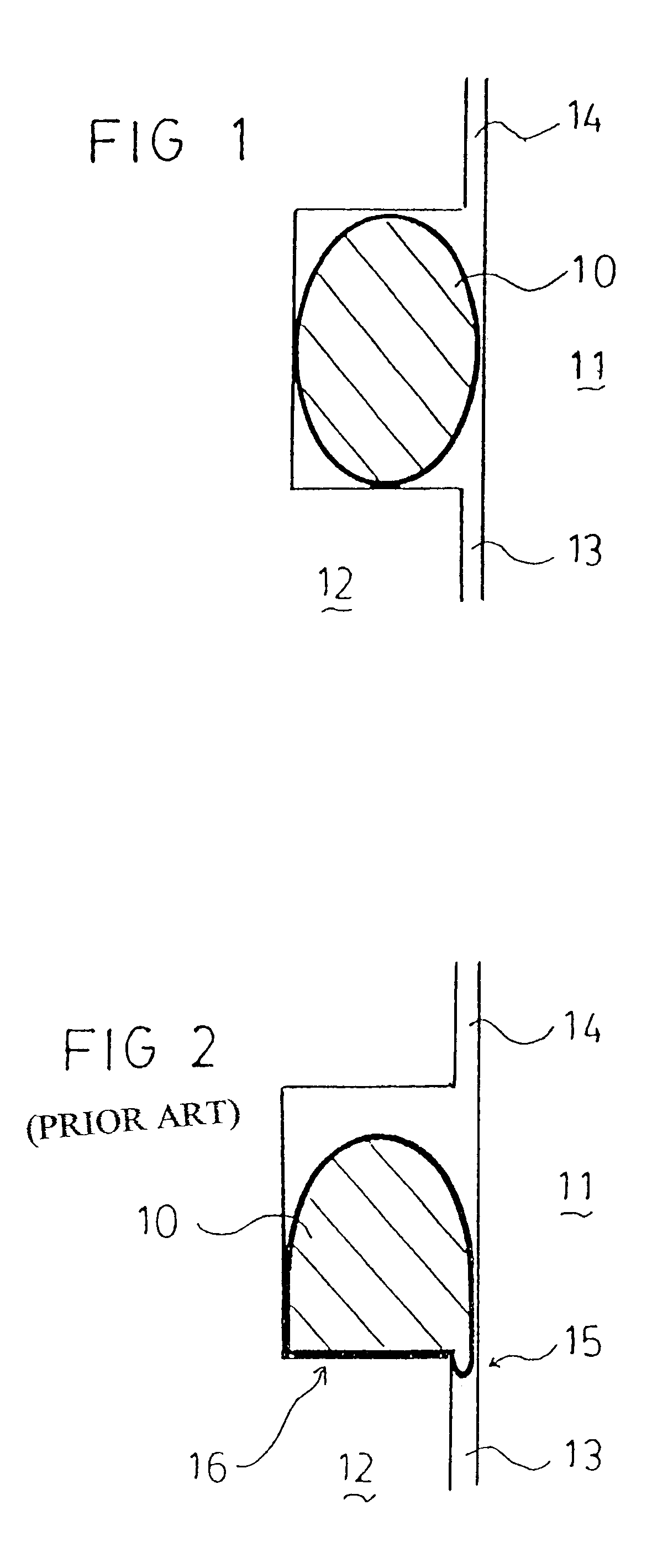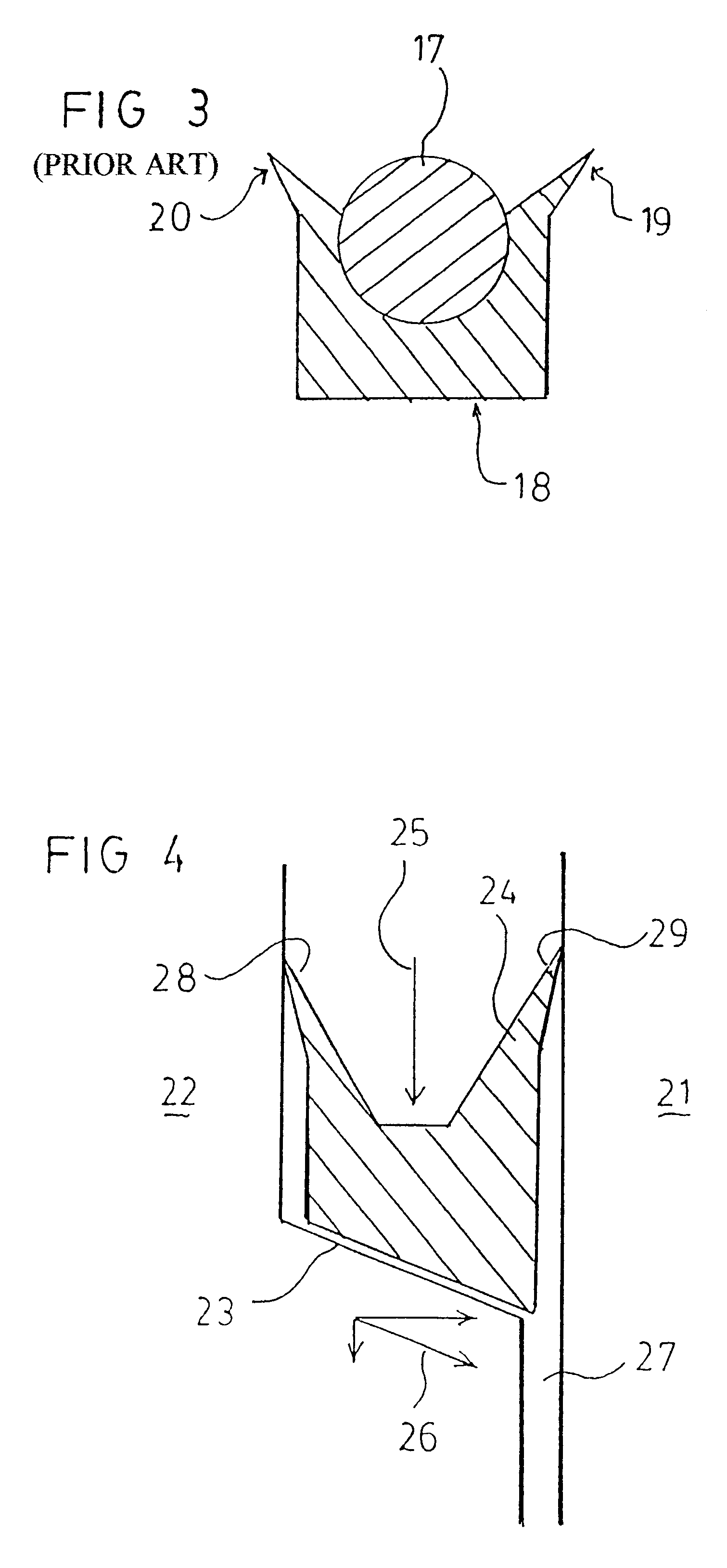Seals for hydraulic assemblies
a technology for sealing and hydraulic assemblies, applied in the direction of sealing, screwing, load-modifying fasteners, etc., can solve the problem of limited hydraulic chamber operative surface area
- Summary
- Abstract
- Description
- Claims
- Application Information
AI Technical Summary
Benefits of technology
Problems solved by technology
Method used
Image
Examples
Embodiment Construction
In FIG. 1 is seen a prior art interference type seal between two parts 11 and 12. The gap 13 is sealed against fluid under pressure in gap 14. This is referred to heroin as the Primary Sealing Mechanism.
The Primary Sealing Mechanism allows seal media to exert a light pressure against opposing surfaces to prevent passage of pressurizing fluid at low pressures yet allowing easy sliding contact between components. As the pressure increases, the force directed against the surface of the seal acts to deform the shape of the seal. This causes a transition of the actual point of contact at which sealing occurs from the low pressure point of contact to that area immediately adjacent the extrusion gap. At such time the seal material can be said to act simply as a barrier or plug to prevent loss of pressurizing fluid through the extrusion gap. This effect is herein described as the Secondary Sealing Mechanism.
FIG. 2 shows the shape ultimately adopted by the seal under increased pressure. The ...
PUM
 Login to View More
Login to View More Abstract
Description
Claims
Application Information
 Login to View More
Login to View More - R&D
- Intellectual Property
- Life Sciences
- Materials
- Tech Scout
- Unparalleled Data Quality
- Higher Quality Content
- 60% Fewer Hallucinations
Browse by: Latest US Patents, China's latest patents, Technical Efficacy Thesaurus, Application Domain, Technology Topic, Popular Technical Reports.
© 2025 PatSnap. All rights reserved.Legal|Privacy policy|Modern Slavery Act Transparency Statement|Sitemap|About US| Contact US: help@patsnap.com



